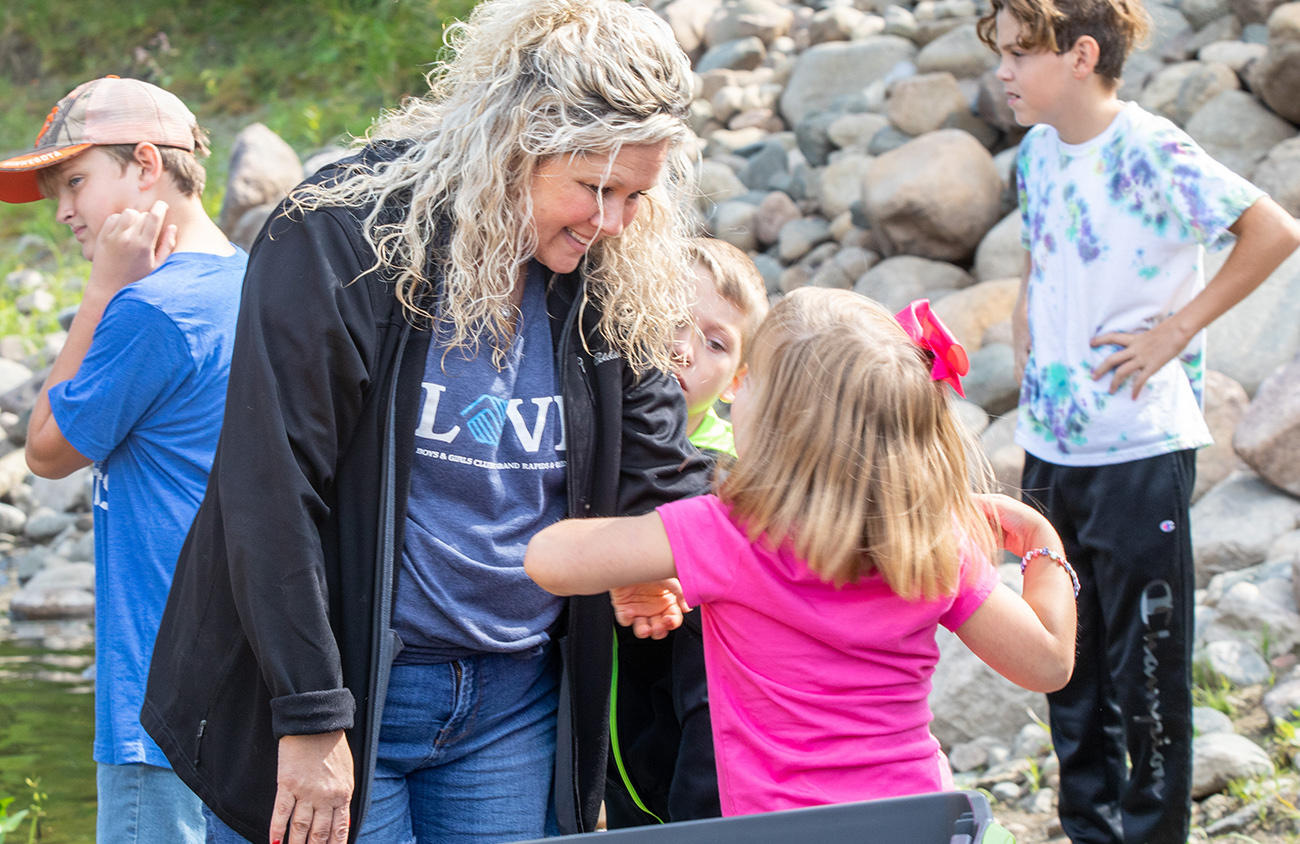
Helping kids cope, and flourish, through the pandemic
Grantee Spotlight: Boys and Girls Clubs of Grand Rapids and Greenway
Nearly 400,000 people live in our region and almost 63,000 of them are under age 18. Each one has been affected in some way by the upheaval of COVID-19.
How many times have you heard it said that kids are resilient? Adults may be tempted to think children and youth can easily shake off the mash-up of stressors caused by the pandemic. In truth, adverse experiences can carve deep trauma-response pathways into developing brains.
The great news is there are scores of people and programs across Northeast Minnesota dedicated to helping kids cope and even thrive. The Boys and Girls Clubs of Grand Rapids and Greenway (BGC) is one.
“We want kids to know we will be here”
The BGC met the COVID curveball with creativity and firm commitment.
During the first chaotic days and weeks of the pandemic, Area Director Lori Kangas-Olson and her staff gathered and agreed: We have to be that positive, consistent face and place to be. No matter what’s happening with school closings or other challenges, we want kids to know we will be here.
In March 2020, like so many organizations, the clubs had to shut down but re-opened in June as an essential service. School closures meant shuffling sites. In Grand Rapids, the club operated in an old school building no longer used for classes. In Greenway, temporary space was found in a church building just a block from the high school.
“We opened our doors to all K-12 students who needed a place to be during the day.”
Lori Kangas-Olson, Area Director, Boys and Girls Clubs of Grand Rapids and Greenway
Membership swelled to 590 students across both sites, a full 10 percent of all students in the districts. Between rent and utilities, longer hours, more programming, and hiring extra staff, the budget strain was real. Membership fees are just $10 per year, per family, but no-one is turned away for inability to pay. A $35,000 Northland Foundation grant for general operating support – flexible dollars to cover whatever needed covering – eased the financial load.
“Northland Foundation support was really important to be able to stay operational and serve the big increase in kids during the pandemic,” Kangas-Olson said.
“There is still underlying anxiety”
How are things today? “We see kids needing more support academically and emotionally. There is still underlying anxiety,” said Kangas-Olson. “Every time someone gets the sniffles, it can cause alarm. Some kids are doing really well. The routine is back, although the energy and interaction aren’t quite the same as before the pandemic, at least not yet.”
Support for social-emotional growth, a club cornerstone, has been “amped up” with increased staff training in Adverse Childhood Experiences and partnerships with behavioral health resources. BGC has not only been a place for schoolwork but also to access counseling, both in-person and virtual, filling a big need for children, youth, and families.
BGC’s steady presence and focus on delivering high-quality programming has kept kids engaged and club numbers high. Kangas-Olson shares that more families discovered the Boys and Girls Clubs during the pandemic and are choosing to stay with it.
Northeast Minnesota is home to many, many stories like that of the Boys and Girls Clubs of Grand Rapids and Greenway – solid community resources that do not blink in the face of unexpected hurdles but instead find a way forward.
“Every young person now has an Adverse Childhood Experience called the pandemic,” said Tony Sertich, President of the Northland Foundation. “Adding to the number of caring adults and peers in their lives can help offset the negative effects of the challenges they have had to shoulder.”
“We celebrate and support the educators, counselors, care providers, and out-of-school-time program teams in our rural communities and Native nations who are weaving that critical safety net for kids.,” added Sertich.
